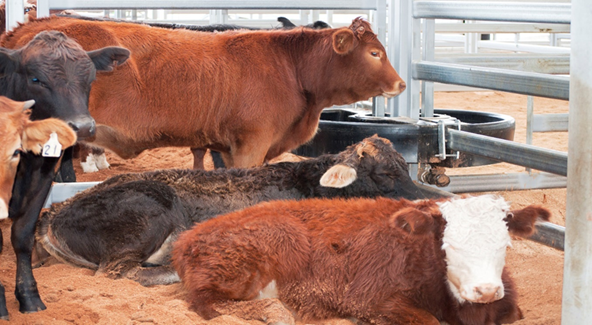The RLX commitment to Animal Welfare
RLX recognises the important role that animal welfare has in providing improved returns for producers and processors and ensuring that the livestock marketed through our sites are afforded timely access to feed, water and shelter and handled with due care and attention.
We pride our-self on our approach to animal welfare and believe that the initiatives outlined below bear testament to that commitment:
1. Provision of shelter and soft flooring (for cattle) in all new facilities;
2. Provision of non-bruise panelling in all new or refurbished pens;
3. Provision of the state of the art livestock handling facilities and equipment in all new facilities;
4. Ensuring that all fodder fed to livestock is free from weeds and foreign material and contains a minimum crude protein content;*
5. Livestock staff are trained in animal welfare and low stress livestock handling techniques;
6. Providing an Animal Welfare Officer at each site to undertake visual assessments of livestock and arranges treatment of injuries or humane destruction if required;
7. The staff responsible for euthanising livestock are appropriately trained and assessed by a qualified Veterinarian as competent to undertake this task;
8. Recording of livestock mortalities to monitor welfare trends and performance;
9. An Welfare Policy that aligns with the ‘Australian Animal Welfare Standard – Livestock at Saleyards and Depots’;
10. An incident reporting system that enables site users, patrons and members of the public to report details of any perceived welfare concerns;Signage at all sites to raise awareness of animal welfare among livestock transporters, agents and patrons;
11. An incident reporting system that enables site users, patrons and members of the public to report details of any perceived welfare concerns;Signage at all sites to raise awareness of animal welfare among livestock transporters, agents and patrons;

12. Fining agents that present livestock that are deemed unfit for sale and classed as ‘No Commercial Value (NCV);
13. Banning the use of dogs in cattle yards and ensuring all dogs used in sheep yards are muzzled;
14. Banning the overuse of electronic prodders and drafting aids;
15. Using horses (where possible) to move cattle to and from selling pens to reduce livestock stress;
16. After hours receival of transit livestock that require unloading and spelling;
17. Regular liaison with transporters and livestock agents to facilitate animal welfare awareness and promote industry best practice; and
18. Collaboration with regulatory authorities to report animal welfare incidents.
(Note: the minimum crude protein for cereal hay is 4% and other types of hay is 8%).











